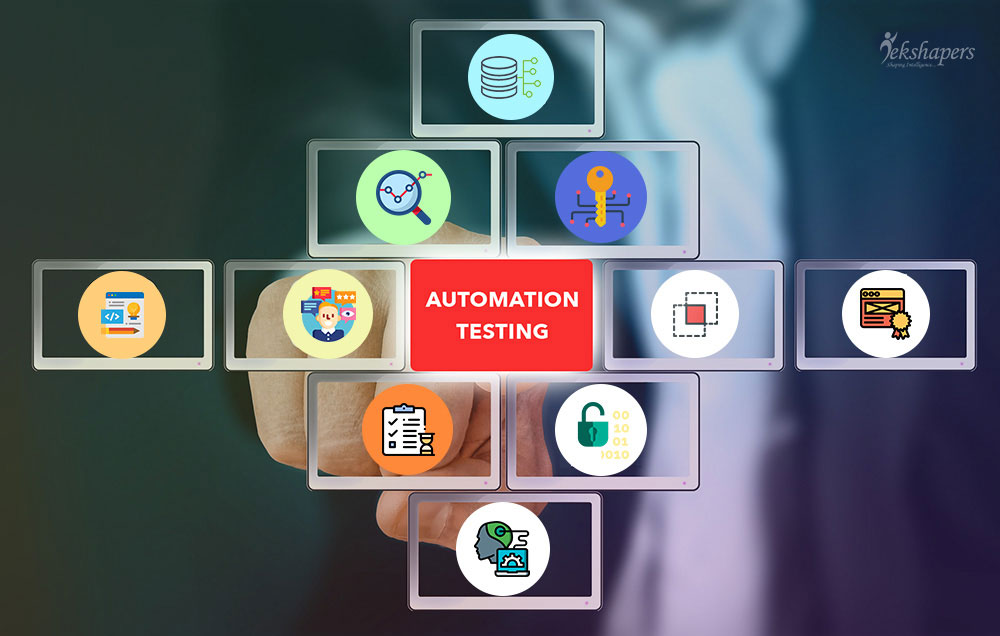The Complete Guide on Enterprise Data Analytics

The business gets transformed into the data-driven enterprises, the data technologies and its strategies are required to set the values in delivering the best services. Together with social, mobile and cloud, in the digital age, the analytics and associated data technologies have emerged as the core business disruptors. In the year 2017, as the IT companies began the shift from being data gathered to data powered software development companies, the data and analytics became the center of gravity for many enterprises in 2018. In today's economic environment, there is an unprecedented focus on directly managing big data or developing the data lakes for storing these massive quantities of data. Keeping together an enterprise data strategy must be a fundamental responsibility of any organization which seriously took the use of data for providing insights and direction.

Enterprise Data Analytics
Data is being exploded every day and the IT teams are wrestling with the data management, security, accessibility, end users to get the analytics in however manner they can. Recently, there were some customers who challenged whether it is possible, or even it is relevant for defining an enterprise data analytics strategy in today's environment of self-service and continuous disruption. As we all know that data is growing at a faster rate than ever before. By the year 2020, every person who is online will create a rough sketch of about 1.7 megabytes of new data every sec, every day and top of that about 44 zettabytes of data will exist in the digital universe by that time. There are many other factors which are also affecting the data-driven organizations, which lead to the huge demand for data analytics solutions from business leaders.
What does Enterprise Data Analytics Means?
Enterprise analytics actually refers to the process of having a data, business and the process analytical capabilities all across an enterprise. This helps to provide the organizations with the ability to collect analyze and process analytical data either in all or most of the business functions. This is primarily a form of big data analytics where the business can perform the processes of analytics on the data which stored across the organization. On Google alone, the users altogether perform more than 40,000 search queries every sec, therefore each organization requires a dedicated platform to capture and analyze the data at these increasing rapid speeds.

This analytics is used by data analysts, big data analysts or web analyst for extracting the meaningful and knowledge data or relations from the raw data repositories which it already has. The enterprise analytics solutions can be a standalone information system which can be offered by using the data mining, business intelligence, web analytics, big data analytics solutions, etc. Enterprises have been the mining data for years, even for centuries that starts from handwritten books keeping ledgers but by the late 1970s, the advent of database management system took place. The growth of operational system rapidly took place along with the data gathering.
Need of Data Analytics
Below are given some of the key reason why organizations need to consider the enterprise data analytics as discussed below:

Components of Enterprise Data Analytics
Some of the components which are used in Enterprise data analytics are given below as:

Components of Data Analytics
Characteristics of Enterprises Data Analytics
Being on the very precipice of fast data, there are the following characteristics which must be considered to get the real value from data:
-
Empower all employees through data
Because the time lag can hurt the organization, therefore, the central business teams will no longer own the software and will not be responsible for disseminating insights to the other departments. Everyone within the business requires accessing that platform, just not only to analyze the data, but they also need it to gain the insights for their individual roles.
-
Leverage multiple data sources
Across the world, about 90% of all the existing data is developed within a period of just 2 years. All the sources of that data are predicated on increasing the coming year's record, whether it is a transactional data from POS terminals or the sensor data from home appliances. The setups which are utilizing the big data require a comprehensive coverage of all these data sources.

Characteristics of Data Analytics
-
Use data proactively
The big data is not just a guide for the inexperienced; hence it is the tool to solve the problems and to test the hypothesis. To take a recurring business problem such as low sales during the third quarter and the use of a massive pool of data resources, for determining the root cause of the concern. You must understand the underlying data sets behind the data analysis which is the key to technology services.
4 Pillars of Analytics Success
Here are 4 key pillars which help to develop a solid analytics strategy for any software development services provider or industry which can be adapted across the cultures and company sizes as given below:
-
Drive Innovation
- Identifying the external trends to inform strategic decision
- Create and test new ways to transform current practices
- To solve business problems, educate the creative use of data and analytics
- Encourage a new culture of data-driven innovation by bringing external speakers
-
Develop Talent
- Recruit, develop and retain the diverse world class team
- Encourage the culture of trust which rewards the right behavior
- Develop continuous learning tools which support internal & external clients
- Identify the data point’s opportunities across the customer journey

-
Create data-driven culture
- For the improvement of an analytic project, it helps to engage with internal clients
- Audit the analytics tool and report catalog, overload & clean duplication
- Monitors the business vital signs to create a dashboard for transparency of culture
- Develop insightful, consultative reach that led by strong methodology
-
Support business transformation
- Provide thoughtful leadership in analytics techniques and new solutions
- Align with local KPIs to develop deep analysis and custom solutions
- Develop skills and align old capabilities with a new organization
- Develop trust relationships with business leaders
Thoughts on Future of Data Analytics
As we know that data analytics is expected to radically change the manner we live and do the business in the future. According to the study of Scarlet, Sherlock Homes noted that “It is a big mistake to guess before one has the data”. Data ceaselessly supports the expert investigator to deductive thinking for comprehending the complex analytics. The IoT (Internet of Things) is expected to grow from $170.57 billion by the year 2017 to $561.04 billion by the year 2022, which allows to the advent of advanced analytics and data processing techniques. According to the Ovum, Spark is emerging as a complementary tool to analysis and will continue to grow the ways to improve the data analytics. Extensive use of big data in India will ensure the high employment, increase in the compensation and will help the individuals to connect with advanced & new technologies.

Future of Data Analytics
The Enterprise data analytics can radically change the present situation of the businesses by capturing the large volume of data, expanding business models, energizing the imaginative procedures and the overall growth and development of IT Software Company .As per TeamLease services reports, the staffing companies will arrange 2, 00,000 analytics data experts by the year 2020 in India. The NASSCOM has also proposed the educational programs upgrading to incorporate big data analytics in engineering schools. At the present stage, the data researchers with around 5 yrs of experience are gaining more than 7.5 lakhs per annum. With the skewed demand-supply gap, the data analytics industry is at the existing base of $2 billion and develops a CAGR of 26 for each cent.
Conclusion
Enterprise data analytics is only as useful as the rate of analysis. Otherwise, the organizations may not have gained the access to the real-time decisions and the suggestions for the statistic which is quite necessary to make an informed decision with better outcomes. Through the fats data, the information can become more plentiful, more actionable and more beneficial to the businesses.
Recent Blog

Why Your Business Needs a Mobile App?
06-Dec-2022Related Blogs

How Beacon Technology Impacts Business
27-Apr-2018
What will be the Future of Blockchain Technology
14-May-2018

The Complete Guide on Enterprise Data Analytics
17-Aug-2018










